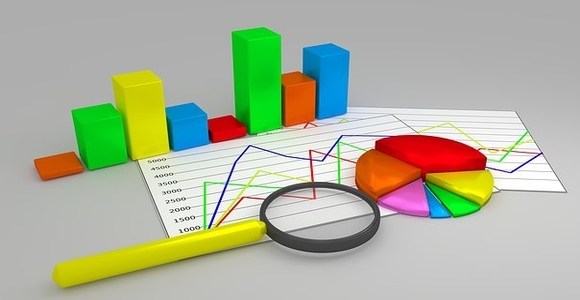What is Business Forecasting?
The late 19th and 20th centuries were a period of severe economic and social turbulence. According to Walter A. Friedman, author of the book titled Fortune Tellers: The Story of America’s First Economic Forecasters, entrepreneurs like John Moody and Roger Babson initially developed the forecasting field following the Panic of 1907. During World War I, the United States of America has only about ten operating forecasting agencies. However, after the war, the number of forecasters grew as professional economists like Warren Persons, and Irving Fisher joined the forecasting field. Learn more about forecasting and discover its benefits techniques and benefits to various industries by reading this article.
Getting to Know Business Forecasting
Business forecasting is a multifaceted approach to accounting that is used to predict the future of a business such as expenditures, revenue, sales, profits, and economic fluctuations. Aside from estimating and predicting the future, this method is also used to respond to various business needs through data interpretation and by using analytics, experience, and insights. Moreover, forecasting is an invaluable tool that helps the business people to determine potential growth, business needs, and many other factors affecting the industry.
Business forecasting is a vast topic since it has various types, divided according to different criteria. Let’s take a look at the three main types of business forecasting, namely: General Forecast, Sales Forecast, and Capital Forecast.

1. General Business Forecast
Every business owner needs a general business forecast since this type starts from the assumption that there is no entirely independent business. Every business is affected by internal and external factors such as the condition of the business and the community in which the business is located. Moreover, the political conditions, fiscal policy, population, and national income are also some of the essential factors that managers should consider in assessing future conditions and predicting any likely changes.
2. Sales Forecast
Sales forecasting is a method used to decide the fate of a company or an organization as its sales determine its success. This type of prediction should be carried out with due care and precaution since it deals with revenues, which creates stable operations and opportunities for growth. Sales forecasts are also useful for evaluating the given directions of the planning department if everything has been carried out to promote its sales.

3. Capital Forecast
Forecasting the capital requirements has become a necessity and is taken as the primary step in organizing the entire company or organization since it is the key to meet its needs. Forecasting the capital also allows you to prepare for the depreciation, replacement, reorganization, development, etc., of the fixed or working capital. Having an accurate prediction helps the organization to utilize its capital to the fullest extent, plus it allows them to get the optimum returns on its investment.
The Importance of Business Forecasting
Weather forecasts provide information about storms, so people can make necessary preparations and take evasive actions. Meanwhile, business forecasts assess the status of the economy to predict events, so entrepreneurs and business people can make preparations to counteract them. Whether accurate or not, forecasting is vital because businesses thrive on being prepared. Forecasts can be more reliable if the estimations and assumptions are supported by preexisting data that are based on reliable market behavior drivers. Assessing the quality of previous estimates for their consistency and accuracy and reliable data can improve the quality of future forecasts. The following are the growing importance of business forecasting:

1. Customer Satisfaction
Forecasting benefits, not just the business but also the customers. Having a business forecast will help you predict the product demand, thereby allowing you to provide the products that will satisfy your customers.
2. Effective Formulation of Plan
Planning and forecasting are closely related. Planning involves forecast data of a factual nature that have an enormous significance on its effectiveness. Undoubtedly, correct forecasting is an essential element in planning since the premises of planning include some forecast. Adequate planning—whether it is long-term or short-term, overall or sectoral—largely depends on forecasting.
3. Accuracy of Management Decisions
Whether business or organization is large or small, changes in its conditions occur such as unforeseen contingencies and transfer or change of personnel. With the changes mentioned above, decisions should be made to keep the business’ stability. For example: In the case of planning the production of a company, the management, together with the production team, should decide what to produce and with what resources. Accurate forecasting plays a vital role in the correctness of management decisions. Therefore, forecasting is an indispensable component of the business.
4. Effectively Estimates Financial Requirements
Successful capital forecasting is essential in estimating the financial requirements of a business or an organization. The utilization of capital is a critical issue before the management since no business can survive without adequate capital. However, the adequacy of fixed or working capital entirely depends on accurate financial forecasting.
5. Promotion of New Business
Starting a business is not an easy task since it is full of uncertainties and risks. It cannot be denied that forecasting is of the utmost importance with regard to setting up a new business. With the aid of a forecast, the owner or the promoter can determine whether he/she can succeed in the proposed business. Moreover, having a forecast allows the promoter to face the existing competition in the market. Right after discovering the business opportunity, the promoter will see possibilities of assembling money, workforce, and resources.
6. Success!
It is difficult to make decisions as to how much production should be done in the absence of an accurate sales forecasting. The accuracy of the budgets of other departments depends upon the precision of the sales forecasts. Therefore, the success of a business or organization depends on the accuracy of the forecasts delivered by its various departments.
In addition, forecasting helps to identify the risks, see opportunities, formulate strategies and tactics, plan and control cash flow, fulfill requirements for potential investors or lenders, and manage sales and adjust sales targets.
Examples of Forecasting Techniques
1. Qualitative Techniques
- Market Research Technique: Under this technique, researchers can conduct surveys and polls to find out the sale of a product. This method can be done by sending questionnaires to prospective and present consumers. Moreover, consumers can also be interviewed personally, so the manager can find out whether the product’s consumption increases or decreases. However, this method is somewhat costly and time-consuming.
- Past Performance Technique: Under this technique, forecasts are made based on preexisting data. This method can be utilized if the past has been consistent and the owner or the manager wants its resemblance in the future.
- Internal Forecast: In this technique, the data used for developing forecasts are indirect. Internal forecasts are sales forecast based on consensus, or a build-up, of estimates through the sales channels of the firm.
- Deductive Method: It is a dynamic method wherein its main feature is that the end does not guide it and probing into the future relies on the present situation.
- Direct vs. Indirect Methods: The direct method is also called the bottom-up method of forecasting. In this case, the different subordinate units on departments prepare estimates, and the company takes the sum of these departmental estimates. Meanwhile, the indirect method is also called as “top-down” method of forecasting. In this case, first estimates are made for the entire industry or trade, and then the share of the individual units of that trade or industry is ascertained.
- Jury of Executive Opinion: The management may bring together executives of various functional areas of the business such as production, sales, purchasing, finance, personnel, etc. It provides them with the necessary information that are related to the product for which the forecast has to be made, gets their views on it and on this basis arrives at a figure.
2. Quantitative Technique
This technique are known as statistical techniques. It focuses entirely on historical data and on patterns. Under this technique, the data of the past performance of a product line or a specific product are utilized and analyzed to establish a rate of change or a trend which may show an increasing or decreasing tendency.

3. Time Series Technique
This technique is useful when a lot of historical data are available and when the stability of trends are apparent. It identifies the patterns representing a combination of trends and cyclical factors based on historical data. Moreover, this method tries to identify the “best-fit” line by eliminating the effect of random fluctuations. Under this technique includes trend projection, moving average, and exponential smoothing.
4. Causal Modeling
Causal models are constructed to explain the relationships between sales and other factors such as price, advertising, or product availability. This technique includes the following methods, namely: regression analysis, economic models, and economic indicators.
5. Technological Forecasting
This technique focuses on predicting what future technologies are likely to emerge and how they are to prove economically feasible. Moreover, this technique deals with the changes in technology that can affect the business or organization. The most widely used methods under this technique are cross-impact analysis, morphological analysis, and substitution effect.



